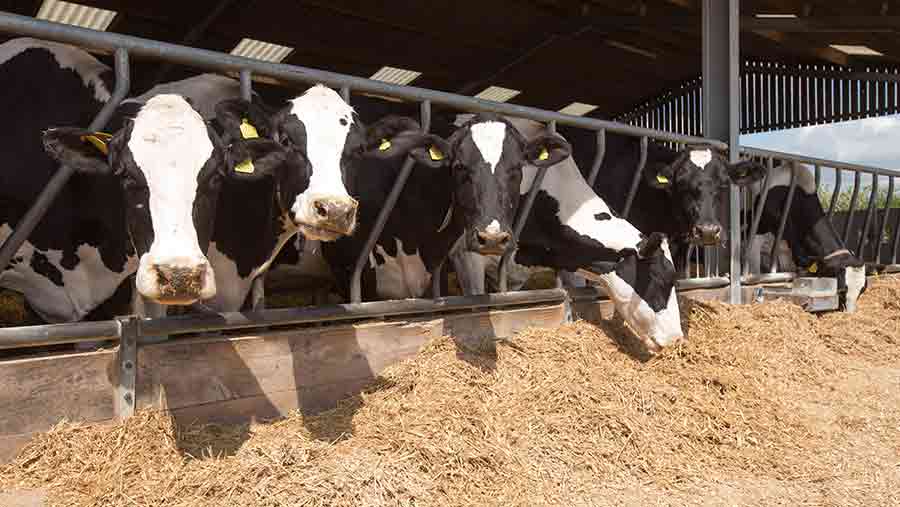Milk from forage increases as farmers cut costs
 © Tim Scrivener
© Tim Scrivener Milk from forage has increased 20% in the year to May as farmers look to cut costs and increase margins over feed.
The figures, collected from 1,800 UK dairy herds by dairy specialists Kingshay, represent conventional Holstein-Friesian herds bigger than 50 cows.
The average cow in the sample produced 2,707 litres from forage in the year. In May, milk from forage increased 7% compared with the same month last year to 12 litres a cow a day, despite lower-than-average grass growth for much of the month.
Purchased feed costs were 15% lower in the year to May at 6p/litre, with concentrate prices averaging £208/t.
Home-grown forage
Kathryn Rowland, senior farm services manager, said farmers had been making better use of home-grown forage in an effort to improve their purchased feed efficiency.
The bottom 25% of herds in the sample had improved the most when ranked by milk from forage.
“They have been more focused on rationing to reduce feed costs and have cut out a lot of supplements that were quite expensive, without affecting yield too much.”
Effect on fertility
The knock-on effect on fertility had pushed calving intervals up by two days, which was not much of a problem for most producers, she said.
However, she expected to see a greater effect on fertility in next year’s results, although Ms Rowland said the benefit of reduced costs was generally worth it.
Yields over the year increased 2%, averaging 8,237 litres a cow. However, in April yields decreased just over 0.5 litres a cow a day and just under 0.2 litres a cow a day in May.
AHDB figures released on Monday put UK daily deliveries in the two weeks ending 2 July 9.2% lower than the same period last year – amounting to 3.9m fewer litres a day.
This was blamed on a combination of poor grass quality, due to erratic weather, and a reduction in supplementary feeding.
